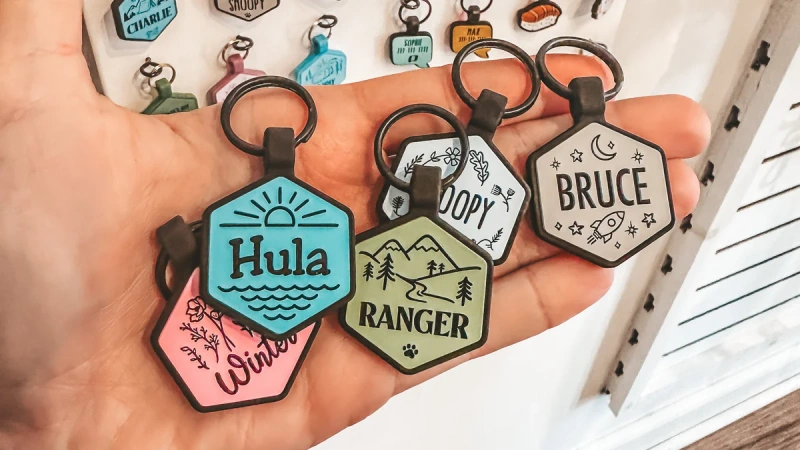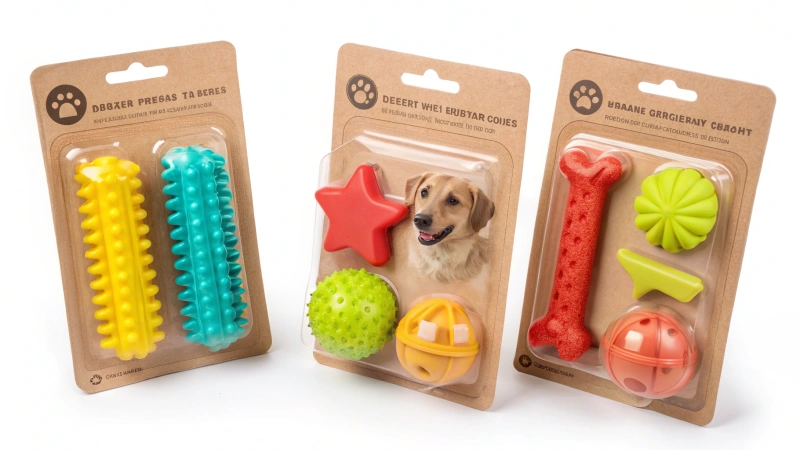In this comprehensive guide, we’ll walk you through the process of wearing different types of dog harnesses, including neoprene mesh, Y-shaped, step-in, H-shaped, and no-pull harnesses. We’ll also provide tips on measuring your dog for the perfect fit and avoiding common mistakes. By the end of this article, you’ll be ready to make every walk with your pup safe and enjoyable.
Finding the Right Size for Your Dog
Before diving into the specifics of each harness type, the first crucial step is measuring your dog for the perfect fit.
How to Measure Your Dog
- Chest Girth: Using a flexible tape measure, wrap it around the widest part of your dog’s chest, usually right behind the front legs. Add about 2 inches (5 cm) to this measurement for comfort.
- Neck Girth: Measure around the base of your dog’s neck, where a collar would typically sit. Again, add about 2 inches (5 cm) for comfort.
- Body Length: Measure from the base of your dog’s neck to the base of their tail.
Pro Tip: If your dog falls between sizes, always opt for the larger size to ensure comfort and prevent chafing.
Choosing the Right Harness Size
Once you have your measurements, consult the size chart for the specific harness you’re interested in. Most harness sizes are based on chest girth, but some may also consider neck size or body length. A well-fitted harness should allow you to comfortably fit two fingers between the harness and your dog’s body at any point.
1. How to Wear a Neoprene Mesh Dog Harness
Neoprene mesh harnesses are popular for their comfort and breathability. Here’s how to put one on:
- Unbuckle the harness and lay it flat.
- Place the harness over your dog’s head, with the D-ring (leash attachment) on top.
- Pull the bottom straps down between your dog’s front legs.
- Wrap the side straps around your dog’s body and buckle them on each side.
- Adjust the straps for a snug but comfortable fit.
2. How to Wear a Leather Dog Harness
Y-shaped harnesses distribute pressure evenly across the chest and shoulders. Follow these steps:
- Release the side buckles
- Feed this in between their front legs
- Bring the chest strap between the front legs and up to meet the back piece.
- Buckle the sides, connecting the chest and back pieces.
- Adjust all straps for a secure fit, ensuring you can fit two fingers under each strap.
3. How to Wear a Step-in Dog Harness
Step-in harnesses are great for dogs who don’t like things going over their heads. Here’s how to use one:
- Lay the harness flat on the ground in a figure-8 shape.
- Have your dog step into the loops with their front paws.
- Pull the harness up around your dog’s body.
- Clip the buckle on your dog’s back.
- Adjust the straps for a proper fit.
4. How to Wear an H-shaped Dog Harness
H-shaped harnesses offer good control and are often used for larger dogs. Follow these steps:
- Loosen all straps and place the harness over your dog’s head.
- The horizontal chest strap should sit just behind the front legs.
- Bring the belly strap up and buckle it on your dog’s back.
- Adjust both the chest and belly straps for a snug fit.
- Ensure the vertical straps are centered on your dog’s chest and back.
5. How to Wear a No-Pull Dog Harness
No-pull harnesses are designed to discourage pulling behavior. Here’s how to put one on:
- Loosen all straps and place the harness over your dog’s head.
- The chest strap should sit across the breastbone.
- Bring the belly strap up and clip it behind the front legs.
- Adjust both straps, ensuring a snug fit without restricting movement.
- Attach the leash to both the chest and back rings for maximum control.
Common Mistakes to Avoid
While putting on a harness might seem straightforward, there are some common pitfalls to watch out for:
- Harness Too Loose: A loose harness can allow your dog to slip out, potentially leading to dangerous situations. Ensure you can fit only two fingers between the harness and your dog’s body at any point.
- Harness Too Tight: On the flip side, a harness that’s too tight can cause discomfort, chafing, and even restrict breathing. If you notice your dog panting excessively or showing signs of discomfort, loosen the harness immediately.
- Incorrect Placement: Each harness type has a specific way it should sit on your dog’s body. For example, the chest strap on most harnesses should sit across the breastbone, not on the throat. Improper placement can lead to discomfort and reduce the harness’s effectiveness.
- Rushing the Process: Putting on a harness should never be a race. Take your time to ensure everything is adjusted correctly. Rushing can lead to mistakes and create a negative association for your dog.
- Ignoring Signs of Discomfort: Pay attention to your dog’s body language. If they seem uncomfortable or resist wearing the harness, don’t force it. Instead, try a different style or consult with a professional trainer.
- Not Checking for Wear and Tear: Regularly inspect your harness for any signs of damage. A worn-out harness can break unexpectedly, compromising your dog’s safety.
Tips for Success
Now that we’ve covered the basics and common mistakes, let’s look at some tips to make the harness-wearing process smoother for both you and your furry friend:
- Use High-Value Treats: Always have a stash of your dog’s favorite treats on hand. Use these to reward your dog during the harness-wearing process, creating a positive association. Studies show that positive reinforcement can increase learning speed by up to 40% in dogs.
- Start with a Large Loop: When putting on an over-the-head harness, make the neck loop as large as possible initially. This makes it easier and less intimidating for your dog to put their head through.
- Take It Slow: Introduce the harness gradually. Let your dog sniff and investigate it before trying to put it on. This can reduce anxiety and make the process smoother.
- Practice at Home: Before heading out for a walk, practice putting the harness on and taking it off at home. This low-pressure environment can help your dog get used to the process.
- Check the Fit Regularly: Dogs, especially puppies, can grow quickly. Make it a habit to check the fit of the harness every few weeks. A harness that fit perfectly last month might be too tight now.
- Clean the Harness: Regular cleaning (follow the manufacturer’s instructions) can prevent skin irritations and extend the life of the harness. Aim to clean it at least once a month, or more often if your dog loves muddy adventures.
- Consider Your Dog’s Breed: Some harnesses work better for certain breeds. For example, short-nosed breeds like Pugs or Bulldogs might do better with a Y-shaped harness that doesn’t put pressure on their throat.
- Pair with Proper Leash Training: A harness is a tool, not a solution. Combine harness use with proper leash training for the best results. Consistency is key – studies show that dogs learn best with short, frequent training sessions.
Conclusion
Mastering the art of putting on a dog harness might take a little practice, but it’s well worth the effort. A properly fitted harness ensures your dog’s comfort and safety during walks, making outdoor adventures more enjoyable for both of you.
Remember, every dog is unique. What works perfectly for one might not be ideal for another. Don’t be afraid to try different styles until you find the perfect fit for your furry friend. With patience, positive reinforcement, and the tips provided in this guide, you’ll be a harness pro in no time.
Most importantly, always prioritize your dog’s comfort and safety. A well-fitted harness should allow for natural movement without causing any discomfort. If you’re ever in doubt, consult with a professional dog trainer or your veterinarian.
About Wedogy
At Wedogy, we’re passionate about creating high-quality, comfortable, and safe pet products. Our range includes various types of dog harnesses discussed in this guide, along with collars, leashes, bandanas, and poop bag holders. All our products are designed with your pet’s comfort and safety in mind, using durable materials and thoughtful designs.
As a B2B wholesaler based in Guangzhou, China, we specialize in providing pet products to businesses worldwide. Whether you’re a small pet boutique, a large pet store chain, or a pet product distributor, we have the capacity to meet your needs.
If you’re interested in wholesale opportunities or have any custom pet product ideas, we’d love to hear from you. Our team is always ready to discuss how we can support your business with our extensive range of pet products. Don’t hesitate to reach out to us.








